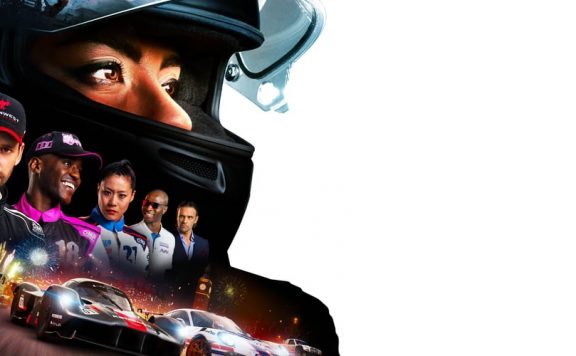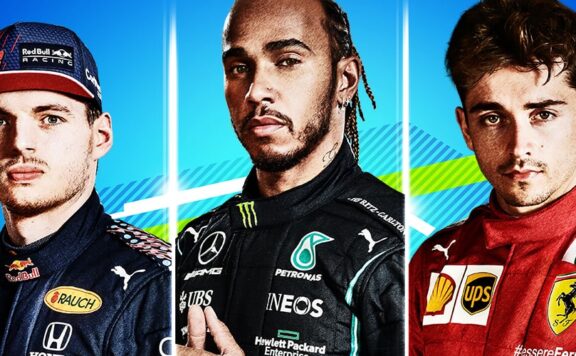Since the release of GRID Autosport, it felt like Codemasters’ touring car racing series had been rolled back into the garage for retirement from the great race of video gaming. Despite having captured a spark of magic at the start of the PlayStation 3 and Xbox 360 era, the company hadn’t managed to recreate it for the two sequels, the tone shifting alongside the DIRT series in a more populist direction for the sequel, and then swinging back in completely the opposite direction for the third game.
Five years on and the racing game market is much clearer; sim and more realistic racers are more popular than ever, and Codies have done well with both their F1 series and the hard-nosed rallying of DIRT Rally. There’s definitely space for something with a bit more pizazz and flair, though. Without a number or a subtitle, GRID is Codemasters’ attempt to reboot the series and recapture that magic of the first game.
One of the most interesting tidbits from our hands on time with the game is that, having wrapped on the design of Dirt Rally 2.0, the handling team from that excellent rallying sim were brought in to work on Grid. That might be cause for excitement, given their previous accomplishments, but Grid is a very different beast. Instead of a full-blown sim, the game needs to be more accessible – much more accessible. It should feel authentic, but with a few assists that still allow relative newcomers to pick up the game and have fun enjoying the spectacle of a sprint race through the streets of San Francisco or Barcelona.
In the end, the takeaway is that the handling is quite light and breezy. With assists helping the way, it’s relatively easy to have the rear step out and slide through corners, but on the other end of the spectrum with assists turned off, even nipping a kerb can put you in danger of losing it into a wall if you don’t take care on the throttle. You always feel like you’re on the edge, and that can be a lot of fun in a close race against some feisty AI.

Just as the first Grid pioneered the flashback rewind system, this reboot has its own potentially revolutionary idea: a choreographer. Now before you cover your ears and start screaming until it goes away, hear me out, because it might not actually be a terrible idea. The thing about more realistic racers is that they’ve often ended up feeling a little on rails. AI has got a lot better over the last few years, but there’s still a tendency for them to look and feel more processional than a French Grand Prix, as though their feigning to compete with one another while waiting for you to catch up and briefly battle with them on your way to victory. But real racing (in everything that isn’t F1) is more consistently filled with action thanks to regulations that reverse grids, maintain a balance of power, add weight to winning cars and so on. That brings with it a lot of unpredictability, and that leads to excitement.
So the choreographer is there to massage certain parts of the game to be a little more exciting. Mechanical failures are there that could see a driver traipsing around the track with a punctured tyre or reduced engine power, a little wobble through a corner can see an AI spin out and cause a big crash, cars can even roll in quite spectacular fashion. Our demo had all of this turned up to the 3000 – seeing a spin was practically a guarantee and I was caught in a spectacular crash as an AI effectively turned into a tunnel wall and started flying through the air – but in the full game it will be more subtle and much less frequent. For example, the first two drivers will never be caught in a choreographed moment that hands you an undeserved win, but a little slip or mistake that gives you an opening might occur. Most importantly though, these events will never be targeted at the player themselves.
There’s 400 named opponent AIs in the game and 72 AI teammates, and they span the spectrum of ability, from novice through to being able to beat esports pros. Each has different characteristics with slightly different braking ability, cornering speed, overtaking judgement, and so on. That adds its own element of unpredictability, but the choreographer will also randomly pick a few drivers on the grid to be “on it” and have a good day with slightly boosted stats.

Grid accepts that good hard racing will often result in contact, but that getting a little shunt or nudge through a corner will piss you off as a driver. The AI can get pretty peeved by this as well, and if you bump someone one time too many, they’ll become your nemesis out on track. This hands them a bit of a stat boost and makes them more aggressive as they battle with you – these are the only drivers able to initiate contact as a means of fighting for position. After the race? All is forgiven, and if you race cleanly, you might almost never encounter a nemesis.
I really feel that all of this will either make or break Grid for those looking forward to a return for the series. Even a whiff of rubber-banding will have diehard racing fans wrinkle their noses in disgust, and even more so when it’s a game that tries to capture the essence of motorsport, but Grid is fully embracing the idea of massaging a race to be more interesting and exciting.
Then again, it could work well given the target audience. As Game Director Greg Smith describes it, using a computer keyboard as an impromptu ruler, the range of racing game fans they’re to cater to ranges from the left side of the space bar on the arcade racer end of the scale, and halfway through the number pad on the sim racer side of things. It’s a wide, wide range, and possibly wider than any other racing game on the market.

That’s a big part of why the career mode is as broad and liberally designed as it is. There’s six racing categories to beat, but you only need to complete seven of the thirteen events in each to unlock the showdowns, and only four of the categories before you can challenge the returning Ravenwest team. Note that it’s “complete”, not “win” or “come third”. Even if you don’t win overall, you can simply move on to the next event and carry on, or you can go back and satisfy a perfectionist streak.
While I think there’s a clear vision for what Codemasters want to achieve, I think they’ll have a slight uphill battle convincing people that they’re going about it in the right way. Even mentioning any kind of scripting or choreography will be taboo to a lot of people, and Grid could all too easily end up in the no man’s land of being a bit realistic, but not realistic enough. But then that’s also the point. This could be the game where sim racers go to cut loose and have fun, while also having enough spectacle and showmanship to appeal to the masses. It’s a tricky balancing act for them to pull off, but as someone with fond memories of Race Driver: Grid, I hope they do.






camdaz
I’m keeping my fingers crossed that Codies can return the series to something like the first game. Only time will tell.